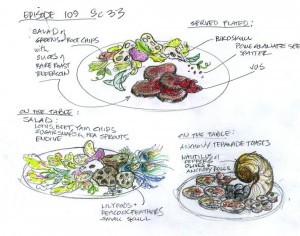One common theme in A.C Swinburne’s poetry is blood and gore, and particularly how it relates to sexuality. The intertwinement of violence and sex is in some way related to power, but the exact nature of that relation is convoluted and debated. In Bram Stoker’s Dracula, this partnership is epitomized and similarly undeniable. While reading Swinburne’s poetry, particularly the poem “Faustine”, the conceptions of violence and sex put forth in Dracula are further fortified by imagery of penetration, bodily fluids (especially blood), and even death. It also represents masculinity and the necessity of men for the continued survival of women.
In Dracula, a team of pure-bred, noble Englishmen set out to defeat a gender-norm-defying, blood-sucking vampire. Blood is the pinnacle of the sex-violence dynamic present throughout the novel. It represents a commodity (as food for Dracula), pain, masculinity, a sacramental marriage bond, and maybe importantly, sex, semen, and violation.
Blood representing masculinity and protection is in regards to when the team of noble men need to save the weak women (Lucy and Mina Harker) with their blood. Van Helsing especially voices this sentiment when he says, “A brave man’s blood is the best thing on this earth when a woman is in trouble. You’re a man, and no mistake. Well. The devil make work against us for all he’s worth, but God sends us men when we want them” (160).
This conception is similarly echoed in Swinburne’s “Faustine”. The heroine (or anti-heroine?) of the poem seems to be a succubus-type creature that feeds on men. While in this poem the genders of the blood-feeding monsters are reversed, the themes stay the same. “She loved the games men played with death,/ Where death must win; As though the slain man’s blood and breath/ Revived Faustine” (65-68). In both of these works of literature, whose authors lived around the same time period, (Stoker lived from 1847-1912, Swinburne from 1837-1909), the nature of blood and gender reflects the same aspects.
In addition to representing masculinity, blood represents lust, sex, and violation. In Dracula, being bitten by a vampire means the vampire physically penetrated you, and your blood, or fluid, is now inside of them. This is inherently non-consensual, depicting a kind of violation. This theme culminated is Dracula’s biting Mina Harker. “Her face was ghastly, with a pallor which was accentuated by the blood which smeared her lips and cheeks and chin; from her throat trickled a thin stream of blood. Then she put before her face her poor crushed hands, which bore on their whiteness the red mark of the Count’s terrible grip, and from behind them came a low desolate wail with make the terrible scream seem only the quick expression of endless grief” (301).
In Swinburne’s poetry, blood mostly represents the lustfulness of sex without the violation aspect, although one could argue that the necrophilia aspects present could be a similar type of violation. When I read “Faustine”, however, I could not help but think of the vampiric features of it. The lustful nature of blood is especially reflected in this passage, “She drank the steaming drift and dust/ Blown off of the scene; Blood could not ease the bitter lust/ That galled Faustine” (73-76). Swinburne’s poetry and Stoker’s Dracula have strikingly similar underlying themes, that relate the each other in similar ways. Why might this be? Perhaps something about the nature of repression and societal conventions at the time could have been an influence. Violence and sex were both sort of “taboo” subjects that were not supposed to be talked about in polite society in England. This could have guided the two subjects to interact with each other in a way that we see in the literature of that time period.




